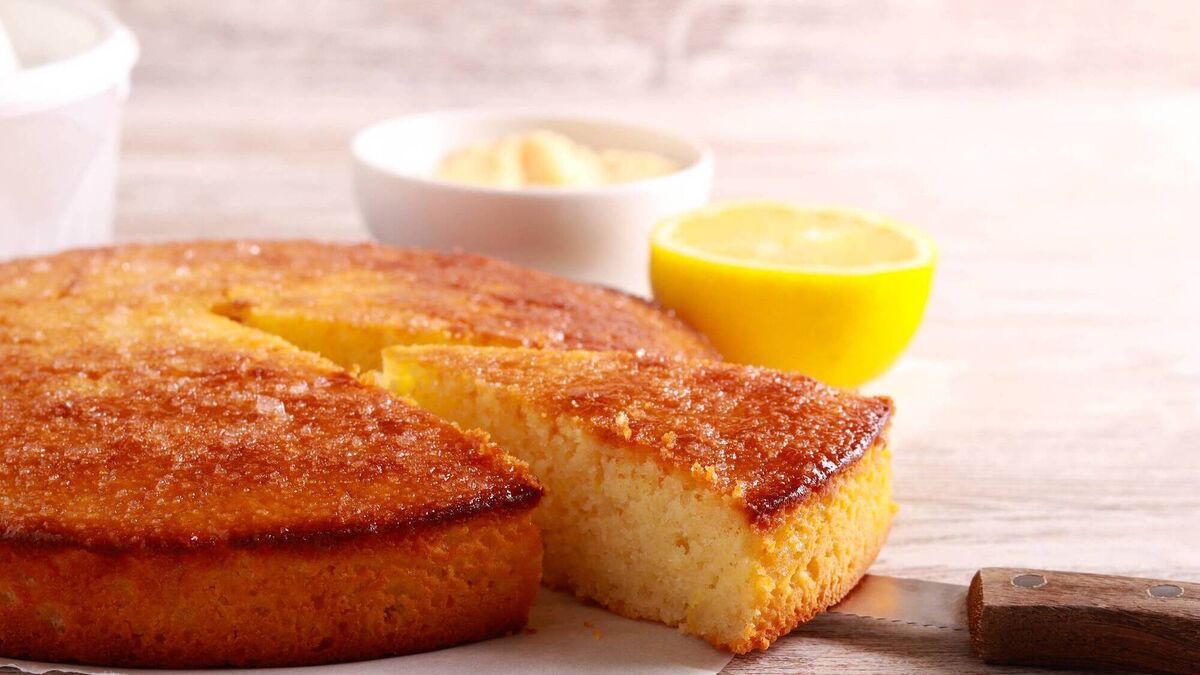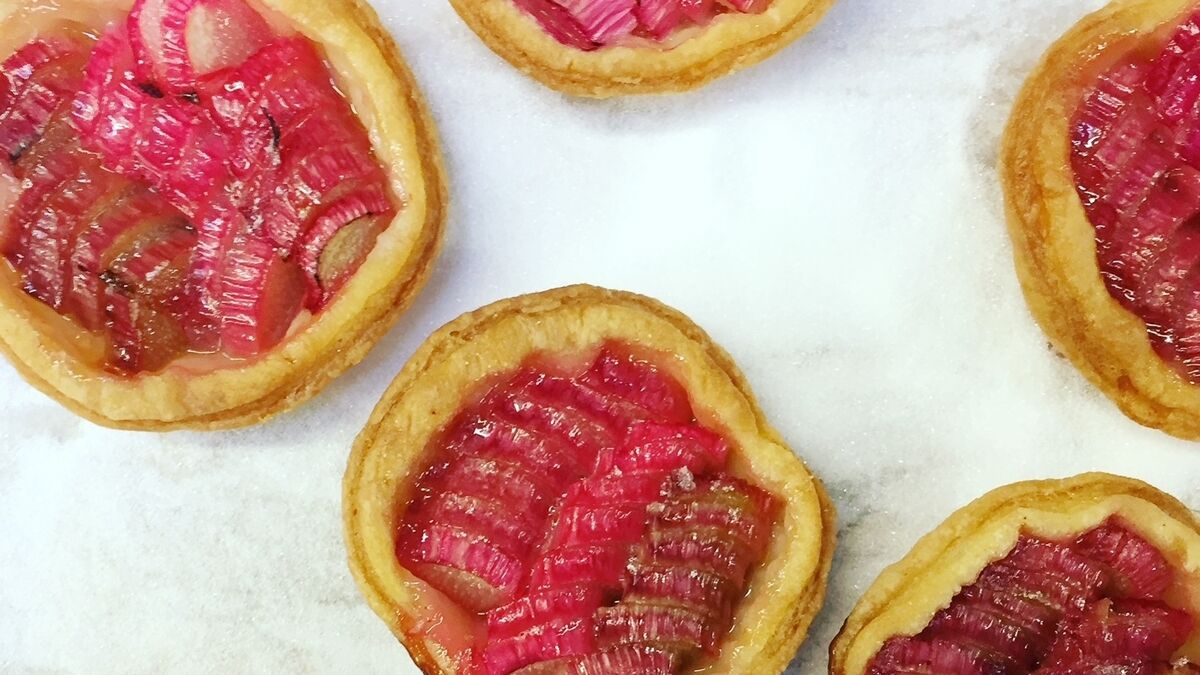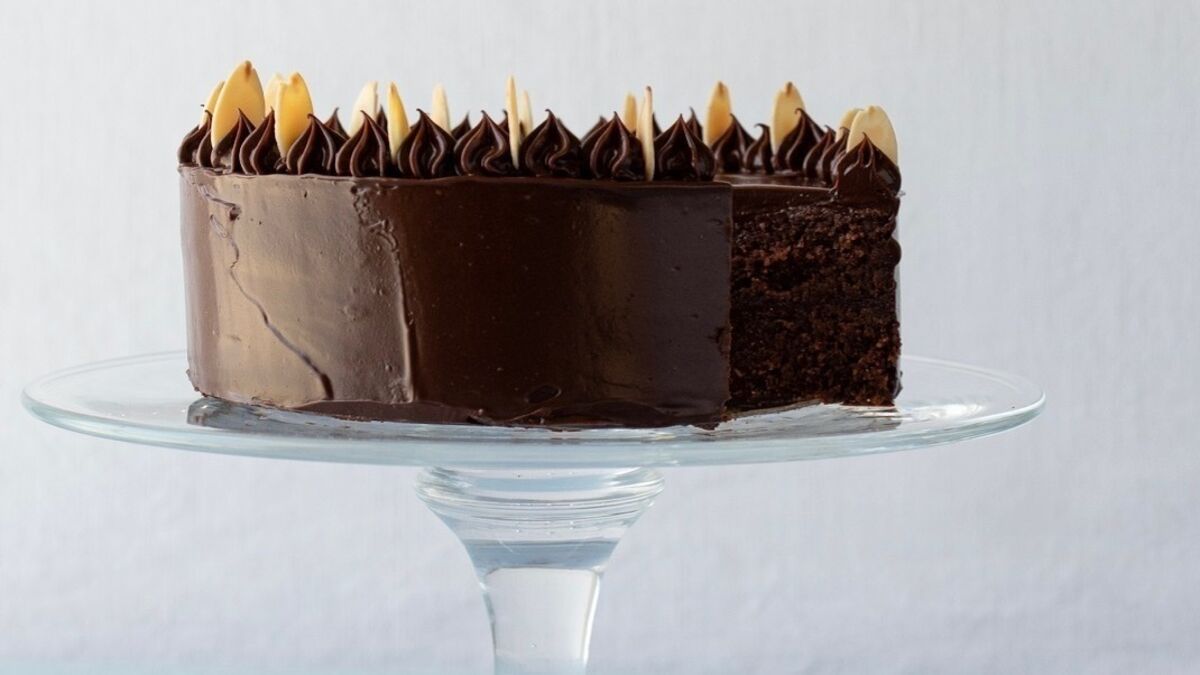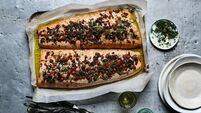Darina Allen: Recipes for my favourite afternoon tea treats — including chocolate cake

Ballymaloe Chocolate Almond Gateau with Crystallised Violets.
National Tea Day is celebrated on Sunday, April 21.
Sure, you’ll have a cup of tea? A warm and friendly welcome, an icebreaker, a comforting gesture in stressful times, a way to pass the time — for many it’s the first gesture of the day, the last before bedtime.
Making tea is a way of life here in Ireland but the ritual has radically changed during the past few decades. It’s now mostly a teabag dropped into a mug rather than tea leaves brewed slowly in a China or tin teapot.
Tea drinking is an important Irish custom, a symbol of hospitality, camaraderie and friendship. We in Ireland are the second biggest consumers of tea per capita in the entire world at 4.83lbs, Turkey being number one.
Well-known brands of Irish tea like Barry’s, Bewley’s and Lyons are packed into suitcases and carried far and wide as nostalgic presents for Irish emigrants who crave the unique flavour of Irish when they are away from home.
Irish tea is mostly a blend of Assam, Ceylon (Sri Lanka) and Kenyan. We like to make it strong, drink it with rich milk and occasionally a spoon or two of sugar.
As I write, memories come flooding back to my childhood and the bottles of sweet milky tea, wrapped in newspaper or tea towels, that we brought out to the fields to the men during haymaking. They put down their pitchforks when we appeared with our baskets and sat with their backs to a haystack, sipping tea from huge mugs that hung on the farmhouse dresser while eating thick slices of soda bread, or spotted dog slathered with country butter.
Is there another ‘sup’ of tea in the pot was a regular question.
I particularly remember Joe who always drank his tea from a saucer, presumably to cool it. I was reminded of this recently when we were warmly offered sweet chai on a visit to the families of transhumant herders in Madya Pradesh. At sunset, we sat on their charpai’s (woven day beds) sipping saucers of sweet, milky chai, watching women in their bright, colourful saris milking the cows and buffaloes into tin buckets. I won’t easily forget the deep rich flavour of the spicy chai made from the fresh milk.
Every country has its tea traditions.
China, of course has its tea ceremony which I was fortunate to experience in Shanghai a number of years ago. The tea was light and exquisite and of course drunk without milk.
In Morocco, the beloved mint tea is also a symbol of hospitality and friendship, made with gunpowder green tea, peppermint and lots of sugar added, it’s traditionally made in an ornate metal teapot and poured from a height into small decorative glasses, instead of a cup or perish the thought, mugs!
Traders often offer a cup of mint tea to entice you to buy some of their wares.
Turkish tea or çay is typically made in a çaydanlik, a metal vessel specially designed for making tea over the open fire or on a gas jet. This too is drunk in small glasses or little cups with sugar lumps dissolving in the bottom.
Even though we hear more about Turkish coffee, Turks drink an inordinate amount of tea which is grown along the Black Sea coast, nearly 7lbs a year per capita. After water, tea is the most consumed beverage in the world.
Tea is traded as a commodity, consequently, there is constant price pressure resulting in increasing challenges for the millions of smallholders who grow and hand harvest tea around the world.
While traditional hand harvesting is still the norm in many countries, mechanisation can of course reduce production costs by as much as 40%. Inevitably, though irresistible to the large tea companies, it threatens employment and thousands of tea pickers in Kenya’s Rift Valley, recently lost their livelihoods.
All tea varieties come from the Camellia sinensis plant which produces five different tea types, black, green, white, oolong and dark teas depending on the degree of oxidation.
If you are concerned about helping tea farmers and pickers to get a fair price for their work and product, enquire from the tea companies. Look out for the Fair Trade or Ethically Sourced stamp and examine the criteria it is based on.
The Rare Tea Company offers a selection of sustainably sourced, single estate loose teas. These rare teas are available both retail and wholesale on the rare tea website www.rareteacompany.com.
It’s worth knowing that each loose leaf brew can be refreshed two or three times. It’s a whole new adventure and one that I’ve embraced wholeheartedly.
For those who would like to know more about, what can be an exquisite beverage or indeed the story behind the true cost of tea, Henrietta Lovell, the intrepid lady behind The Rare Tea Company has also published a really informative and fascinating book entitled, .
For those of you, who would also like the delicious recipe for Ballymaloe Irish Tea Barmbrack check out my recipe.
This week I’ve included some of my favourite afternoon tea treats for you to enjoy.
Lemon Drizzle Cake
A delicious version of everybody's afternoon tea favourite.

Servings
8Preparation Time
10 minsCooking Time
25 minsTotal Time
35 minsCourse
BakingIngredients
175g soft butter
175g unrefined caster sugar
2 eggs, preferably free range
175g self-raising flour
zest of 1 organic lemon
1-2 tbsp milk
Fot the lemon drizzle
freshly grate rind of 1 organic lemon
freshly squeezed juice of 1 organic lemon
75g caster sugar
1 x 20.5cm round cake tin, well-greased or lined with parchment paper.
Method
Preheat the oven to 180°C/Gas Mark 4.
Put the soft butter, caster sugar, eggs, self-raising flour and lemon zest into a food processor. Whizz for a few seconds to amalgamate. Add milk to soften the texture and whizz for a second or two more to combine. Spread evenly into the greased tin. Bake in the preheated oven for 20-25 minutes approx. or until golden brown and well risen.
Meanwhile, mix the ingredients for the drizzle.
As soon as the cake is cooked, pour the glaze over the top, leave to cook and transfer to a wire rack.
Rhubarb tartlets
This recipe is from Ballymaloe Desserts by JR Ryall, published by Phaidon.

Servings
30Preparation Time
25 minsCooking Time
20 minsTotal Time
45 minsCourse
BakingIngredients
1 quantity of cream pastry (see recipe), chilled
flour, for dusting
700g red rhubarb
220-290g caster sugar
softly whipped cream, to serve
Method
Preheat the oven to 190°C/Gas Mark 5.
Place the cold pastry on a generously floured work surface. Sprinkle flour over the top and roll to a thickness of 3mm, using a rolling pin. Cut the pastry into disks using a 7.5cm round cutter. Transfer the disks of pastry to a shallow, flat-bottom bun (muffin) pan, lining each well with a circle.
Place the lined pan in the refrigerator to rest for 15 minutes. Shake excess flour from the pastry scraps, gather them together, wrap in baking paper and place in the refrigerator. The scraps can be re-rolled again when they are properly chilled and used to make another batch of tartlets.
Cut the rhubarb into coin shaped pieces, about 3mm thick and arrange the pieces of rhubarb in a pretty pattern on top of the pastry. Sprinkle a scant teaspoon of the sugar over the rhubarb in each tartlet and bake straight away for about 20 minutes, until the sugar begins to caramelise, and the pastry is a deep golden colour. While the tartlets are baking, line a heatproof tray with parchment paper and sprinkle a thin layer of sugar over the paper.
Remove the tartlets from the oven and transfer them from the bun pan to the sugared baking paper while still hot. Arrange on a pretty plate and serve warm with softly whipped cream.
Ballymaloe chocolate almond gateau with crystallised violets
So difficult to choose my favourite, this is one of several rich chocolate cakes. Use the best chocolate you can buy, Valrhona, Menier, Suchard or Callebaut.

Servings
6Preparation Time
19 minsCooking Time
25 minsTotal Time
44 minsCourse
BakingIngredients
110g best quality dark chocolate (62%) (We use Lesmé or Valrhona chocolate)
2 tbsp Red Jamaica Rum
50g whole almonds
110g butter
100g caster sugar
3 eggs, preferably free range
1 tbsp caster sugar
50g plain white flour
For the chocolate icing
175g best quality dark chocolate (52%)
3 tbsp Red Jamaica Rum
175g butter
crystallized violets or toasted almonds or praline
Method
Preheat the oven to 180°C/Gas Mark 4.
Grease two x 18cm sandwich tins, dust lightly with flour and line the base of each with parchment paper.
Melt the chocolate with the rum on a very gentle heat. Peel the almonds by placing them in a saucepan of boiling water until the skins lift. Strain, cool, peel and allow to dry. Grind in a food processor - they should still be slightly gritty.
Cream the butter, and then add the caster sugar, beat until light and fluffy. Beat in the egg yolks. Whisk the egg whites with a pinch of salt until stiff. Add 1 tablespoon of caster sugar and continue to whisk until they reach the stiff peak stage. Add the melted chocolate to the butter and sugar mixture and then add the almonds. Stir in a quarter of the egg white mixture followed by a quarter of the sieved flour. Fold in the remaining eggs and flour alternatively until they have all been added.
Divide between the two prepared tins and make a hollow in the centre of each cake.
IMPORTANT: Cook in the preheated oven, depending on the oven, it can take between 19 and 25 minutes. The sides of the cake should be cooked but slightly underdone in the centre.
Kylie Magner is passionate about soil conservation, regenerative agriculture and animal welfare. She is a full time farmer who grew up on a mixed farming enterprise in the Central West of New South Wales. After studying for a Bachelor of Business in Agricultural Commerce at Sydney University, Kylie undertook work in various marketing and equestrian roles from Sydney to Japan before landing in Fethard where she met her future husband Billy.
The Magners are now pursuing a lifelong dream of returning to farming to grow ethical and innovative produce. In Kylie’s own words, ‘Everything you eat, has one thing in common. Somewhere, somehow it is connected to soil.
Join me on a journey as we meet the soil and microorganisms within, the animals, plants and the regenerative farmer Kylie. Watch how when they work together in harmony with nature’s cycle, we can make a positive difference to our planet’s health.’
- Use top-quality tea leaves. Put fresh cold water into a kettle, bring to the boil.
- Pour some boiling water into the tea pot, rotate the pot in your hands until it feels hot. Discard the water, measure the tea leaves into the pot (the amount depends on the quality of the tea and the strength required).
- Bring the water back to the boil.
- Pour the boiling water over the tea leaves.
- Cover the pot and allow to infuse for 3 or 4 minutes.
- A tea cosy though not essential is great to keep the tea pot hot.




